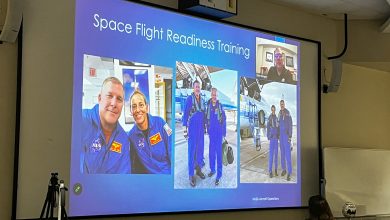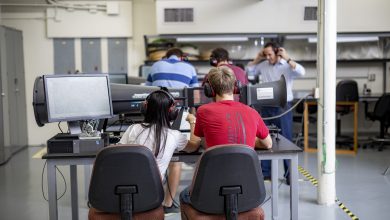Research May Save Lives in Suicide Bombings
MELBOURNE, FLA. — Florida Institute of Technology researchers have determined that where a person is standing in a room or other location during a suicide
terrorist attack can have a great bearing on survival and injuries.
Florida Tech Fulbright Scholar Zeeshan-ul-hassan Usmani and Daniel Kirk, assistant professor in the department of mechanical and aerospace engineering,
will present “Virtual Iraq-Simulation of Insurgent Attacks” at the Institute of Electrical and Electronics Engineers Symposium on Computational
Intelligence. The conference is in Nashville, Tenn., from March 30 to April 2. Usmani will present the paper on April 2 at noon.
The two researchers have developed accurate physics-based models of a suicide bombing attack, including casualty levels and explosive composition. Their
work also describes human shields available in the crowd with partial and full coverage in both two- and three-dimensional environments.
Their virtual simulation tool assesses the impact of crowd formation patterns and their densities on the magnitude of injury and number of casualties of a
suicide bombing attack. For a typical attack, the writers suggest that they can reduce the number of fatalities by 12 percent and the number of injuries by
7 percent if their recommendations are followed.
Simulation results were compared and validated by real-life incidents in Iraq. Line-of-sight with the attacker, rushing toward the exit and stampede were
found to be the victims’ most lethal choices both during and after the attack.
The findings of the study, although preliminary, may have implications for emergency response and counter terrorism.




